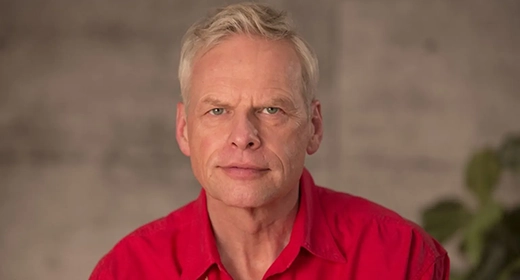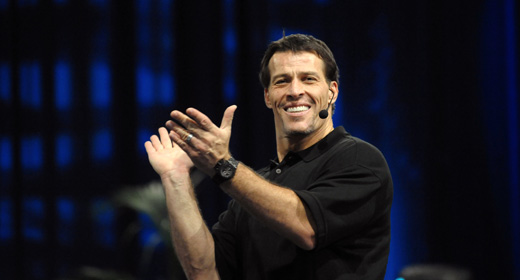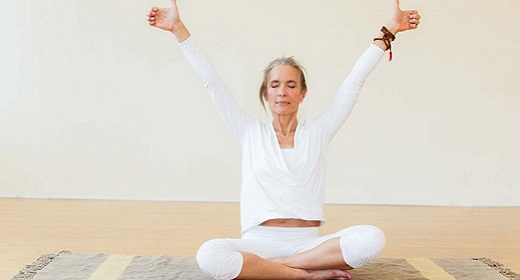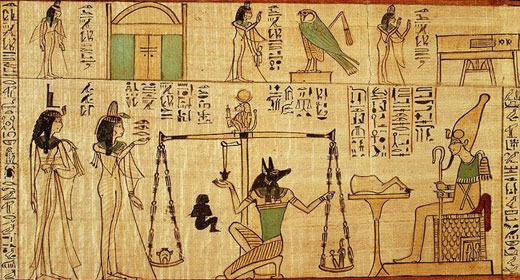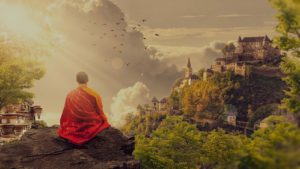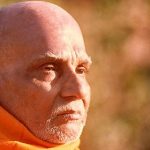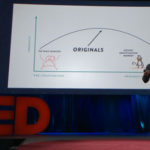by Sierra Hollister: If you practice Kundalini Yoga, you know you have 10 bodies, not one. Here’s the lowdown on all 10 bodies, plus a sequence to awaken them…
As yoga practitioners, we learn that in addition to the Western way of looking at anatomy, there is also a more subtle, energetic anatomy to awaken to. One of the ways we can understand our existence and enhance our potential is to learn about and work with our Ten Bodies. In Kundalini Yoga, we each have three mental bodies and six energy bodies, in addition to our physical body. My teacher, Yogi Bhajan, said, “If you understand that you are Ten Bodies, and you are aware of those Ten Bodies, and you keep them in balance, the whole universe will be in balance with you.” Here’s the lowdown on all 10 bodies, plus a sequence to awaken them.
Understanding the Ten Bodies
1. Soul Body
Our first body is our Soul Body. Our Soul Body is our flow of spirit, our connection to infinity and quite literally our Soul. This body is our foundational and true self, providing us with the ability to live from our heart. The Soul Body responds to all heart work and the raising of our Kundalini (the life force energy that rises up our spine).
2. Negative Mind
Our second body is our Negative Mind. And before you go all “negative,” consider this: our Negative Mind is our first and often our strongest “body,” constantly working to assess our environment and situations for danger or negative potential. Our Negative Mind keeps us safe and alive and also gifts us with, as Yogi Bhajan said, “a longing to belong.” The Negative Mind is balanced with discipline and integrity.
3. Positive Mind
Our third body is our Positive Mind. Our Positive Mind works to assess what is beneficial, positive, and affirming. This “body” sees opportunity and allows us to identify resources. The Positive Mind gives us our willpower as well as our playfulness. Everything we do to strengthen our navel point (think strong core) and to increase our self-esteem is beneficial for this body.
4. Neutral Mind
Our fourth body is our Neutral Mind. Our Neutral Mind absorbs and evaluates the assessments from the Negative and the Positive Minds and delivers guidance to us. Our Neutral Mind is compassionate, intuitive, and gives us the ability to recognize polarities. Meditation is great for balancing this body.
5. Physical Body
Our fifth body is our Physical Body. This body is the temple where all the bodies dwell in some way, shape, or form. The Physical Body gifts us with the ability to balance ourselves and our lives as well as the capacity to sacrifice for our hopes, our dreams, and the greater community. This body also holds the energy of the Teacher. The Physical Body loves regular exercise and sharing what has been learned.
6. Arcline
Our sixth body is our Arcline. You can visualize your Arcline Body as a halo, extending from earlobe to earlobe and encompassing the hairline and brow. Women have a second Arcline across the breast line. Our Arcline Body gives us the ability to both project as well as intuit. This body grants us the ability to focus as well as meditate. The Arcline responds well to pituitary gland sequences as well as drishti (gaze) to the third eye.
7. Aura
Our seventh body is our Aura. This body is our electromagnetic field of energy that surrounds our Physical Body. Ironically, I often feel that I am straying into the fanciful zone when talking about the Aura, and yet the Aura is scientifically measurable as well as scientifically validated! Our Aura acts as a container for our prana, our life force energy. This body also acts as a shield of protection and allows us to elevate ourselves—energetically as well as consciously. Meditation is beneficial, as well as wearing natural fibers. The color white, which holds all the colors of the spectrum, is believed to expand and magnify our Aura.
8. Pranic Body
Our eighth body is our Pranic Body. By breathing, we are constantly working with our Pranic Body to bring in life force. This body gives us the gift of energy for action and accomplishment. All pranayama will have a positive impact on our Pranic Body.
9. Subtle Body
Our ninth body is our Subtle Body. This body allows us to see beyond what is in front of us to the universal play of everything. Our Subtle Body is deeply woven with our Soul Body. When we die, our Subtle Body carries our Soul. Many great teachers continue to influence us through their Subtle Body, beyond the death of their Physical Body. Our capacity for mastery is held in this body. In keeping with mastery, doing a Kundalini practice for 1,000 days in a row is a way to balance the Subtle Body.
10. Radiant Body
Our tenth body is our Radiant Body. This body is exactly as it sounds—it gives us our radiance as well as our courage, our nobility. People that are magnetic and/or charismatic are great examples of well-developed and balanced Radiant Bodies. The greatest thing we can do for our Radiant Body is to have commitment. To be committed to our practice, to kindness, truth, and excellence in life is a great way to amplify our radiance.
In our understanding of the Ten Body system, we also have an Eleven. Bonus! Eleven is embodiment, the state where we are beyond duality and in the flow of truth, balance, and the divine. All Ten Bodies are balanced. Eleven also represents the sound current (which represents the beginning/the source of all that follows in Kundalini) and infinity, as well as the source of all mantra.
All Kundalini Yoga works with the balance and strength of the Ten Bodies. Some practices concentrate on a specific body, while others work with the whole system. A kriya is a series of postures, breath, and sounds that work toward a specific outcome. Practicing a kriya initiates a sequence of physical and mental changes that affect the body, mind, and spirit simultaneously. A great place to start your exploration of the Ten Bodies is with the following kriya, “Awakening to the Ten Bodies.”
Kundalini Sequence to Awaken the 10 Bodies
1. Easy Pose

Come into Sukhasana (Easy Pose). Bring your hands to your heart in Prayer Mudra and rub the hands together a few times. Settle the joints of the thumbs into the sternum, close your eyes, and tune in with the Adi Mantra: Ong Namo, Guru Dev Namo (I bow to the subtle divine wisdom, I bow to the teacher within). Sing it out loud three times.
2. Stretch Pose

Come on to your back. Bring your heels together, point your toes, and lift your feet 6 inches from the ground, while simultaneously lifting your head 6 inches and gazing at your toes. The arms are lifted with the palms facing each other. If this feels like too much, you can slide your hands under your lower back for support as a modification. Hold this posture for 1-3 minutes with “Breath of Fire,” a pranayama that is equal inhale and exhale, powered by the pumping of the navel. (*Take a pass on both Stretch Pose and Breath of Fire if you are pregnant.)
3. Tuck your knees into your chest.

Continuing on your back, tuck your knees into your chest with your arms wrapped around your knees or simply your hands, if you are tight through the low back and or legs. Lift your head, directing your nose between your knees. Hold with a Breath of Fire for 1-3 minutes. (*Substitute Long Deep Breathing—about a 6 second inhale/6 second exhale with no breath retention—if you are pregnant or on the heavier days of your cycle.)
4. Ego Eradicator

Come up into Easy Pose. Curl your fingertips to the top pads of your palm and extend your thumbs away. Lift the arms to a 60 degree angle, with the thumbs aimed at each other over the head. Hold with Breath of Fire, eyes closed, for 1-3 minutes. To end, inhale and bring your thumbs to touch over your head, exhale opening the fingers.
5. Reach for your toes.

From Easy Pose, release your legs so that they are spread comfortably wide. The feet will remain flexed. Inhale, lifting the arms overhead, stretching from the base of the spine, then exhale down to the left, touching the toes if possible. Inhale back up to the center, then exhale down to the right. Continue in this rhythm for 1-3 minutes.
6. Hold your toes.

Continue to sit with legs wide. If possible, fold and reach out to hold the toes of both feet. You can modify by holding on to your shins. You will exhale and bring your forehead to the floor, then inhale, allowing the torso and head to lift up. Continue for 1-3 minutes.
7. Grasp your shins.

Return to the cross-legged position of Easy Pose and grasp each shin. Inhale and flex your spine forward, then exhale and flex the spine backward. Keep your head level and arms should be fairly straight, yet relaxed. Keep up for 1-3 minutes.
8. Rock Pose

Shift from Easy Pose to Rock Pose, sitting on your heels. Allow your hands to rest flat on the thighs. Continue to flex the spine as before, rolling forward for the inhale, rolling back for the exhale. Eyes are closed and rolled gently upward to the third eye (brow point). Continue for 1-3 minutes.
9. Grasp your shoulders.

Continue sitting on your heels. Align your torso and head forward, lift your arms and grasp your shoulders, with your fingers in front and your thumbs behind. Inhale and twist to the left, exhale and twist to the right. Keep your arms lifted throughout, with upper arms parallel to the floor. Continue for 1-3 minutes.
Stay in the posture, bringing the torso center again. Keep the hands in the same position. Inhale and lift the elbows upward, bringing the wrists to touch behind the head. Exhale and release the arms to the original position. Keep up for 1-3 minutes.
10. Venus Mudra

Continue sitting on your heels. Interlace your fingers into Venus Mudra. Inhale and stretch the arms up over the head, then exhale the arms back down, mudra in lap. Continue to lift arms up on the inhale, and lower on the exhale, 1-3 minutes.
11. Shoulder lifts

Release into Easy Pose. Allow your hands to rest on the knees. Inhale and lift the left shoulder, exhale and lift the right shoulder while lowering the left. Continue alternating the shoulder lifts, with left going up on the inhale and right lifting on the exhale. Continue for 1 minute and then reverse the breath and movement so that the right shoulder lifts on the inhale and the left lifts on the exhale. Do this for 1 minute.
12. Lift both shoulders.

Move to lifting both shoulders together on the inhale and releasing both down for the exhale. 1 minute.
13. Turn your head.

Still in Easy Pose, hands on knees, turn your head to the left with an inhale and turn your head to the right with an exhale. Continue for 1 minute, keeping your head level as you turn from side to side. Then, reverse the breath and movement so that the inhale happens when you turn your head to the right and the exhale happens to the left. Continue for 1 more minute then inhale deeply, suspend the breath and focus at the third eye. Slowly exhale and relax.
14. Frog Pose

Come into a squatting position, up on your toes with your heels lifted and touching. The fingertips are spread upon the ground between the knees—in this low position, your head is lifted with your gaze toward the sky. Now inhale and straighten your legs up while still keeping your fingers on the ground, so you are in a modified sort of fold, still on the toes. The head is down and relaxed here. Exhale and return to the original squatting position. Continue, inhaling up and exhaling down with a strong and steady rhythm and breath. It is ideal if you can do 54 repetitions, but if this is beyond your capacity, shoot for 26 repetitions, or your best effort.
15. Laya Yoga Meditation

The sequence closes with a beautiful meditation known as the “Laya Yoga Meditation”. Seated in Easy Pose with wrists resting on knees and hands in Gyan Mudra (thumb tip and index finger tip touching). You will be chanting a powerful mantra in a specific rhythm:
Ek Ong Kar(ah), pulling Mula Bandha on the “ah.”
Saa Taa Naa Ma(ah), pulling Mula Bandha on the “ah.”
Siree Wha(ah), pulling Mula Bandha on the “ah,” Hay Guroo.
As you chant, visualize the energy spiraling from the base of the spine up to the top of the head, making a complete circle with each “ah” and allowing the “Hay Guroo” at the end to rise to the top of the head. I love to have the spiral start at the base of the spine and my first bandha is at the navel, second at the heart, third at the throat, with the rest gently rising to the crown. You can find a really beautiful version of the mantra by Sat Kartar at Sat Kartar Music / Laya Mantra. Chant and meditate for 11 minutes.
(*The mantra translates as: One Creator of all Creation, all is a blessing of the One Creator, this realization comes through the Guru’s Grace.)


